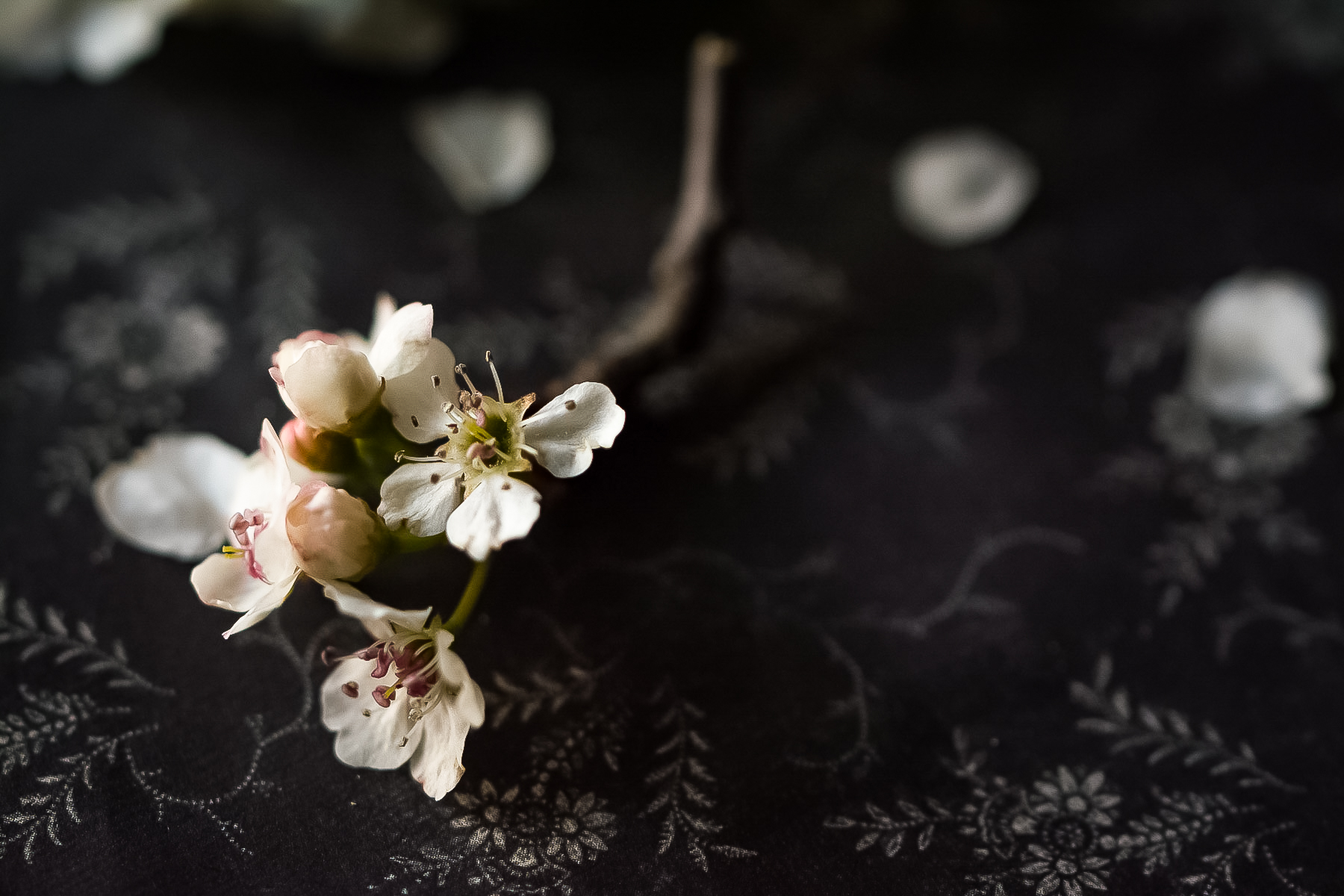In November my mom noticed a lump in her breast. She saw her doctor, who ordered a mammogram and ultrasound. After the ultrasound, the radiologist ordered a biopsy. My mom went in for the biopsy on the day before Thanksgiving. So over Thanksgiving we waited to hear the results. I prayed for a miracle, that somehow this seemingly cancerous lump would turn out not to be cancerous. The Monday after Thanksgiving we heard back: cancer. The Friday after that we heard more: highly aggressive cancer, requiring four to six months of chemo, then surgery, then radiation, then hormone pills for five years. Thus began three weeks of additional biopsies, CT scans, a surgery, a PET scan. Through all of it, I kept praying for a miracle, for a best outcome, for the reports from the doctors and specialists to stop getting worse and worse.
Two days before Christmas, on the morning we were preparing to leave for my mom’s first chemo treatment, the oncologist called. The PET scan revealed that the cancer had metastasized. This means my mom has stage 4 cancer. No chemo. No surgery. No radiation. No cure.
At the time of my mom’s biopsy and initial diagnosis, I was finishing up my master’s degree. My final class was an independent study project in which I was reading and writing about the tales of Hans Christian Andersen. The story I was studying during those weeks was “The Little Mermaid.” In Andersen’s tale, the little mermaid longs to live in the world above, the world of humans, of light and air and sun. She longs for an immortal soul, which she can only receive if a man loves her enough to marry her. Then his immortal soul will flow into her body and she will have an immortal soul, too. On her 15th birthday, she is finally allowed to go to the world above, where she is enchanted by a ship flying all the flags of the world and by the prince whose birthday is being celebrated aboard that ship. Her longing for the world above, for the prince, and for immortality is so great that she trades her beautiful voice for a pair of legs that cause her knife-like pain with each step she takes. She decides it’s worth it and enters the human world.
The symbolism of the story is richly Christian. The little mermaid’s longing for the world above is analogous to our human longing for a higher and better world than the one we know—for Heaven—and her longing for an immortal soul is our human longing for immortality, a longing that we are unable to satisfy on our own. We must receive Christ and be united to Him if we are to live eternally. Similarly, the little mermaid will not receive an immortal soul unless the prince marries her—he must unite himself to her and pour his immortal life into her mortal body. Andersen has set up his tale so that as readers we think the prince is Christ to the little mermaid’s humanity, and we expect him to marry her.
And then he doesn’t.
Not only that, he marries someone else. And the little mermaid knows that when the sun rises on the day after the wedding, she will die. Forever. She will simply cease to be.
The first time I read this story, I was angry. This was not the story I signed up for. I wanted the prince to rescue the little mermaid and marry her. I wanted a happily ever after. Even after countless readings, there is still part of me that wants that.
Instead, in a final act of love, the little mermaid throws away her last chance to escape death. She literally throws it away: when her sisters bring her a magic stone knife, which she can use to kill the prince and save her life, she flings the knife into the ocean and flings herself into the water after it, just as the sun rises.
And then—grace. The little mermaid feels the rays of the sun strike her, but she does not feel death. Instead of dissolving into seafoam on the waves, she opens her eyes and beholds beautiful translucent creatures who sing with ethereal voices more lovely than any music ever heard on earth or in the sea. And then she sees that she has a body like theirs, and a voice like theirs.
Instead of death and annihilation, she has received life. She has a new body, one that is not in constant pain. Her beautiful voice has been restored to her. Her lifespan of 300 years has been restored to her, and more: at the end of those 300 years of life as a daughter of the air, she will receive an immortal soul.
The story puzzled me. I read it again and again, attempting to understand what Andersen was doing, why he did not have the obvious Christ figure rescue the little mermaid. And as I did, it slowly dawned on me. At the very beginning of the story, Andersen says that at the bottom of the sea the sun looks “like a crimson flower from whose chalice all light streamed.” It is the beauty of the sun that first turns the little mermaid’s eyes upward to the human world.
The sun. Of course. The light of the world. The image of the sun as a flower streaming with light echoes Dante’s vision of the mystic rose at the end of The Divine Comedy—the beatific vision of God. More importantly, in Andersen’s evocative image, the sun’s Christological resonances become multiplied, for the sun is not only an image of the rising and risen Christ, the light of the world, it is also the eucharistic wine poured from the heart of God.
Throughout the story, the sun is a quiet Christological presence. But if you’re not paying attention to details, you’ll completely miss that. It’s unobtrusive. It’s hiding in plain sight. Even the little mermaid misses it, forgets that her first love was the sun itself, whose beauty drew her eyes and her heart upward. The prince, lovely and beloved as he is, is only an echo of her true love, her first love, the constant warm and alluring presence that has haunted and drawn her for as long as she can remember. In the end, as in the beginning, it is the sun who draws the little mermaid into new life and hope and glory.
I confess this is not always the ending I prefer. It is beautiful, but even now, even knowing what Andersen is doing here, I sometimes still want a different ending. I still want the prince to marry the little mermaid. But it strikes me that this is a true ending. For me, as for the little mermaid, God’s grace doesn’t always look the way I want it to.
The timing of my studying this story as my mom’s cancer diagnosis was unfolding strikes me as itself a gift of grace. Through this story, God reminded me that grace and goodness are ever-present, like the sun, and that He is always working out His redemptive purposes. Deliverance may not look the way I want it to, but it will come.
God did not reach down and miraculously heal my mother, which is what I wanted, what I still want. But He did give us a gloriously joyful Christmas—not only the day but the season, twelve days of laughter and deep gladness—which brought tears to my eyes then and still does, tears of wonder and gratitude. How was it possible for us to be so gladsome and merry in the face of such devastating news? Grace. Grace upon grace upon grace, lavished on us. God’s goodness in so many details and delights.
And it turns out that Stage 4 cancer is not necessarily a death sentence. There is no cure, but there is treatment, and people can live a long and happy life with cancer. I don’t know if that’s how my mom’s story will go, but I do know that we are not alone in this story, however it unfolds. I know that the sun of righteousness is shining in our lives, with healing in His wings. What that healing entails is up to Him. My job is to keep my eyes and heart open to see and receive the goodness He is pouring out on us just as fast as He can get us to receive it.
K.C. Ireton’s mom went home to be with the Lord Easter Sunday, April 4, 2021. Resurrection Day. She was surrounded by those she loved, including K.C.
The featured image is courtesy of Julie Jablonski and used with her gracious permission for Cultivating and The Cultivating Project.
K. C. Ireton is a multi-published author of both fiction and nonfiction books, including The Circle of Seasons: Meeting God in the Church Year and A Yellow Wood and Other Stories. She and her daughter, Jane, co-host Lantern Hill, a podcast for people who love books, children, and God. Visit kcireton.com to learn more about her work and download the first two chapters of her most recent book. Or visit her on Substack at kcireton.substack.com, where she publishes stories and liturgies.
Leave a Reply
A Field Guide to Cultivating ~ Essentials to Cultivating a Whole Life, Rooted in Christ, and Flourishing in Fellowship
Enjoy our gift to you as our Welcome to Cultivating! Discover the purpose of The Cultivating Project, and how you might find a "What, you too?" experience here with this fellowship of makers!



Thank you for this sharing this vulnerable and beautifully written reflection, Kimberlee.
This is lovely and painful, Kimberlee. Thank you for the gift of it.
Beautiful. I’m sorry for the loss of your mother, and glad for the grace of your Christmastide with her, and that you were able to be with her. Thanks for highlighting the Christological core of that story.
Dearest Friend,
What a treasure was given you, which you, here, have beautifully bestowed on us.
This, this teaches and models so much of His ways. Indeed ”It is good to wait on the Lord…”
Denise